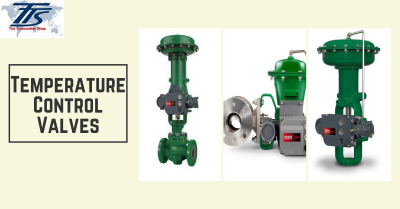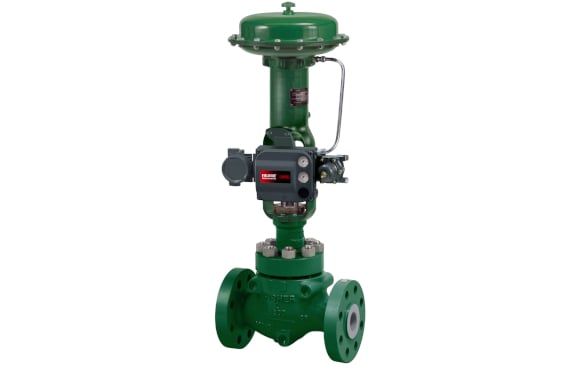The Function of Control Valves in Liquid Flow Administration Systems
The Function of Control Valves in Liquid Flow Administration Systems
Blog Article
Achieve Seamless Assimilation and Control With Top Quality Structure Automation Controls
In the world of contemporary structure management, the importance of top quality structure automation controls can not be overstated. As modern technology remains to development, the integration and control of numerous systems within a structure have evolved to be more reliable and innovative. The smooth procedure and tracking of illumination, A/C, protection, and other building features have ended up being extremely important for boosting owner convenience, power effectiveness, and general functional performance. The journey towards attaining real combination and control is a complex one, with considerations varying from system compatibility to cybersecurity. Welcoming quality structure automation controls is not merely an issue of convenience however a strategic imperative for companies aiming to enhance their centers' efficiency and sustainability.

Development of Building Automation Controls
Throughout the previous couple of years, the evolution of building automation controls has actually dramatically changed the way buildings are handled and run. Originally, constructing automation systems mostly focused on fundamental features such as regulating ventilation, air, and home heating conditioning (A/C) systems. Nonetheless, as innovation advanced, these controls have become extra sophisticated, enabling a larger range of building systems to be incorporated and managed centrally.
The evolution of developing automation controls has actually seen a shift towards more smart systems that can adjust to transforming problems in real-time. This versatility is important for maximizing energy effectiveness and making sure passenger comfort. Additionally, contemporary structure automation controls now offer functions such as predictive upkeep, remote tracking, and information analytics, allowing facility managers to make data-driven choices to enhance structure efficiency.

Benefits of Quality Assimilation
The improvement in structure automation controls towards even more intelligent systems has highlighted the significant benefits of high quality integration in optimizing structure operations and improving general effectiveness. Quality assimilation of constructing automation controls provides numerous essential advantages. To start with, it brings about improved power efficiency by enabling different systems to collaborate perfectly, guaranteeing optimum efficiency and decreasing power wastage. Secondly, top quality combination enhances resident comfort and productivity by enabling customized control over ecological setups like lighting, air, and temperature quality. This modification can bring about a much more comfortable and favorable working or living setting. In addition, quality integration simplifies maintenance and repairing processes, as all systems are interconnected and can be monitored and controlled from a centralized user interface. This central control also gives far better exposure and understandings right into building efficiency, allowing positive upkeep and optimization methods. Overall, the benefits of top quality integration in structure automation controls are obvious, using raised performance, convenience, and functional efficiency.
Boosted Individual Experience and Availability
Enhancing individual interaction with building automation controls via intuitive layout and boosted access boosts the overall experience for owners and center supervisors alike. By concentrating on user experience, building automation systems can become much more straightforward and effective. Instinctive user interfaces, clear navigation, and customizable setups encourage users to engage with the controls conveniently and successfully.
Accessibility features play a vital function in making sure that all individuals, including those with handicaps, can utilize the structure automation controls with convenience. Incorporating features such as voice commands, tactile buttons, and color-contrasted displays can boost ease of access and make the controls a lot more inclusive.
Additionally, improved customer experience leads to higher user complete satisfaction, raised productivity, and better decision-making. Occupants can change ecological setups according to their choices, while center supervisors can efficiently monitor and take care of building systems - control valves. Generally, prioritizing customer experience and ease of access in building automation controls contributes to a much more seamless and productive structure atmosphere for all stakeholders included
Lasting Practices With Automation

Moreover, automation can promote the assimilation of renewable power resources such as photovoltaic panels or wind generators right into structure procedures. By automatically readjusting power use based on the accessibility of renewable resource, buildings can better minimize their dependence on non-renewable sources. This seamless combination of sustainable methods not just profits the environment yet also improves the general operational effectiveness and cost-effectiveness of the building. Via automation, buildings can line up with modern sustainability objectives and add to a greener future.
Future Trends in Structure Control Equipment
In expectancy of advancing innovations and evolving sustainability practices, the trajectory of structure control systems is poised to accept ingenious services and transformative techniques. One noticeable trend shaping the future of building control systems is the raised combination of Artificial Intelligence (AI) and artificial intelligence. These modern technologies make it possible for structures to adjust in real-time to transforming problems, optimizing power consumption and improving convenience for passengers. Furthermore, the Net of Things (IoT) is revolutionizing structure control systems by attaching sensors and tools to improve operations and improve effectiveness.
An see this site additional essential trend is the focus on cybersecurity steps to shield versus possible dangers to constructing automation systems. As structures become more interconnected, making certain durable cybersecurity procedures will certainly be necessary to guard sensitive data and stop unauthorized gain access to.
Furthermore, the change in the direction of cloud-based systems is gaining momentum, enabling streamlined control and remote access to building systems. This facilitates simpler surveillance, upkeep, and updates, boosting the general performance and versatility of structure control systems. As modern technology remains to advancement, these trends are expected to shape the future landscape of building automation controls, driving development and sustainability in the constructed setting.
Conclusion
Future trends in building control systems are likely to focus on more boosting automation abilities for improved energy efficiency and general efficiency. It is necessary for structure owners and drivers to focus on the adoption of quality building automation controls to maximize structure procedures and achieve long-lasting sustainability goals.
In the realm of contemporary structure administration, the relevance of top quality building automation controls can not be overstated. Generally, the advancement of structure automation controls continues to drive development in the structure management market, supplying brand-new possibilities for click producing smarter and much more sustainable buildings.
The improvement in structure automation regulates towards even more intelligent systems has underscored the considerable benefits of top quality combination in optimizing building operations and boosting general effectiveness. On the whole, prioritizing individual experience and accessibility in building automation manages contributes to a much more seamless and efficient structure environment for all stakeholders involved.
It is crucial for structure owners and drivers to prioritize the fostering of quality building automation manages to maximize building procedures and accomplish long-term sustainability goals. - control valves
Report this page